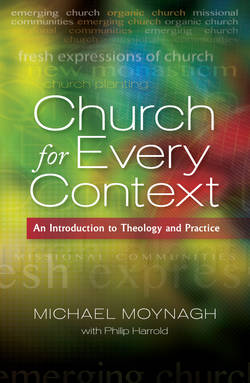Читать книгу Church for Every Context - Michael Moynagh - Страница 29
На сайте Литреса книга снята с продажи.
The dispute over identity
ОглавлениеThe Jerusalem church was born as a reform movement among the Jews. The disciples attended the Temple daily (Acts 2.46) and had a strong sense of their Jewish identity. They saw themselves as the nucleus of a new Israel, living in the last days. As we have seen, they were extremely mission-minded. They assumed that Gentiles would come to faith, but they expected them to do so by becoming Jews.
The conversion of Cornelius challenged that expectation. Peter’s vision of clean and unclean animals together in Acts 10 symbolized, for him, the end of Israel separating itself from the nations. The Spirit falling on Cornelius’ household convinced him that those present could become Christians as Gentiles without converting to Judaism, and his fellow leaders in Jerusalem agreed (Acts 11.18). This was a very significant expansion of the apostles’ sense of spiritual identity: through the Spirit, they were forming a Jewish/Gentile community, not just a Jewish one.
It was of course Paul, deeply immersed in Gentile mission, who did most to reconceptualize the place of Gentile Christians in God’s purposes. They were not coming into Judaism but into church, a new Israel comprising Jews and Gentiles, whose cornerstone was Jesus. Through him all were made one (Gal. 3.26–9).
This notion of Christian identity was very different to that of the more conservative believers. Until recently, it has been common to distinguish between a ‘conservative’ Hebrew group of Aramaic-speaking believers, who clung fiercely to their Jewish traditions, and ‘liberal’ Greek-speaking converts from the Jewish Diaspora, the so-called ‘Hellenists’. New Testament scholars now tend to think that conservatives and liberals, if one can use such terms, were drawn from both Hebrew and Hellenistic backgrounds (Witherington III, 1997, pp. 240–7). Indeed, there was probably not a distinct liberal camp in competition with a conservative one: views on such issues as resistance to Rome, temple worship, purity codes, circumcision and eschatological expectations more likely ranged along a spectrum for each issue. These different spectrums may well not have corresponded to each other (Wright, 1992, p. 454).
With that in mind, conservative elements, who treasured their Jewish identity, no doubt saw the baptism of Cornelius without becoming a Jew as an exception rather than the new norm (Dunn, 2009, p. 402). But when the birth of the Antioch church and Paul’s first mission showed that Cornelius was far from an exception, the issue of circumcision – Gentile converts becoming Jews – flared up again. In Acts 15 the Council of Jerusalem confirmed that circumcision was not required, yet added an important rider (‘the apostolic decree’): Gentile believers were to observe some of the Jewish food laws and certain other stipulations (Acts 15.20, 29).2
Though the traditionalists had lost on circumcision, their desire to protect their Jewish identity had been acknowledged – which made sense from a mission view point. If they strayed too far from their Jewish traditions, mission to their compatriots would have become almost impossible (see Gal. 2.9). A way had been found to combine a single identity – one Lord, faith and baptism – with the preservation of distinctive identities (Jewish and Gentile).
